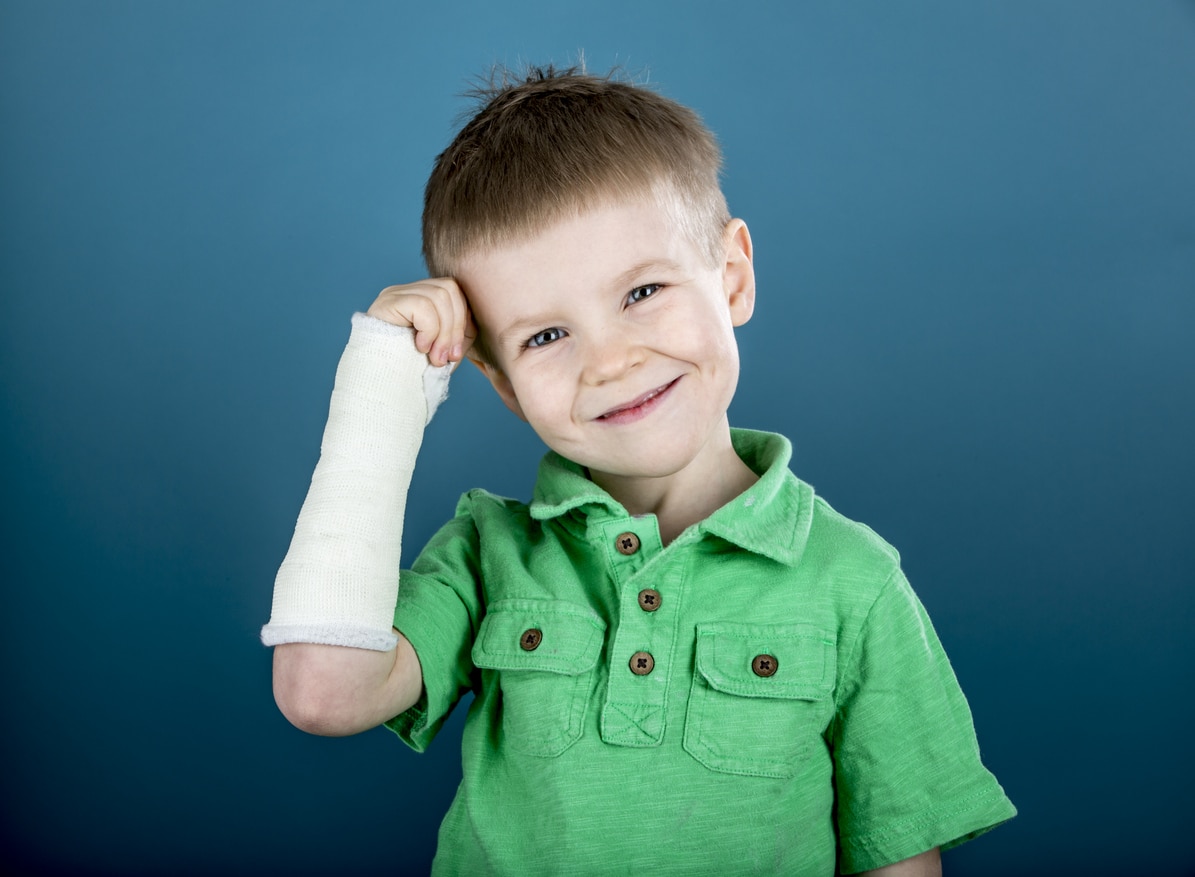Broken bones in children are a common condition. KidsStreet Urgent Care is here to help you understand the most common broken bones in kids, as well as the causes, diagnosis, and treatment options.
What Causes A Bone To Break?
Bones fracture when there is too much pressure or force being exerted on them. This pressure will be too much for the bone to withstand, causing it to break. Some of the most typical conditions where a child could sustain a broken bone include:
- Sports injuries
- Falls
- Car accidents
Additionally, children who are obese, have calcium deficiencies, and poor nutrition can increase the risks of broken bones.
Types of Fractures in Children
Depending on the pressure or impact on the bone, children can develop a few different kinds of fractures. Types of fractures commonly seen in kids include:
- Growth Plate Fractures: fracture occurs in the growth plates or the area of a growing bone.
- Greenstick Fractures: a bone breaks only on one side.
- Buckle Fracture: an outward bend on one side of the bone.
- Stress Fracture: a tiny crack in the bone.
- Comminuted Fracture: bone is broken into multiple pieces, usually more than two.
- Compression Fracture: bone collapses entirely.
Comminuted fractures and compression fractures are considered severe and should receive emergency care as soon as possible.
Common Broken Bones In Kids
While children can sustain any of the previous types of broken bones, buckle fractures are the most common fracture that children sustain.
Typical bones that break include:
- Wrists, forearms, and hands
- Ankles and feet
- Collarbone and shoulder
- Elbow
Broken Bones in Kids vs. Adults?
Children’s bones are more flexible than adult bones, meaning that they can sustain bending or bowing broken bones much easier. Children also have growth plates which are soft areas of cartilage at the end of the bone where the bones continue to grow. Growth plates are also susceptible to fractures.
However, children’s bones heal faster than adults bones due to their excess of connective tissue. This tissue helps prevent broken bones and heal them quicker. Additionally, this also means that broken bones in kids are not likely to pose lifelong issues.
Symptoms of Fractures in Kids
If your child enjoys physical activities, it is crucial that you know the symptoms of broken bones. Common fracture symptoms include:
- Swelling
- Bruising
- Redness around the injured area
- Difficulty moving the extremity
If your child has sustained a severe break or the child’s bone is sticking out of the skin, call 911 or visit the emergency room.
Diagnosing and Treating Broken Bones in Children
Unless the bone is sticking out of the skin or the extremity is visibly deformed, it can be difficult to know if your child has broken a bone.
X-ray imaging may be required to fully understand what type of broken bones your child has sustained and what the treatment plan should be.
Common treatments for fractures in kids include:
- Cast or splint
- Braces
- Reduction or setting the bone
Additionally, your child’s provider may also advise your child to limit physical activities such as organized sports until the bones heal.
At MainStreet Family Care, we provide diagnosis and treatment for minor broken bones in our urgent care services for kids. We even do X-rays!
Reducing The Risks of Broken Bones
Children who are physically active are naturally at a higher risk for breaking bones. However, there are a few methods you can use to reduce your risk of sustaining fractures. These methods include the following:
- Always wear the appropriate safety equipment when playing sports, such as helmets and knee and elbow pads.
- Make sure their safety equipment fits them properly.
- Using the equipment properly at all times
- Practicing good form in all exercises or sports
- Ensure your child eats a calcium and vitamin D-rich diet
- Encourage physical activity as this strengthens bones
Additionally, you should teach your child how to fall properly. Falls are inevitable but are a common cause of fractures. Teach your children not to catch themselves with their arms straight out, but rather fall on their forearms and keep their head tucked when falling. This significantly reduces the risks of fractures.
Turn To KidsStreet Urgent Care
If your kid has sustained a minor broken bone, turn to KidsStreet Urgent Care! Our kid-focused clinic can help your child heal and feel better, fast!
To visit our clinic, register online. You will be able to wait from anywhere until we’re ready to see you, and we will send you a text when it’s time to head to the clinic. You’ll have thirty minutes to check in at the front desk from the time that we text you.
We love walk-ins, and we accept them daily! However, we highly recommend registering online before visiting the clinic as it reduces in-clinic wait times. Walk-ins are added to the same queue as those who register online.

